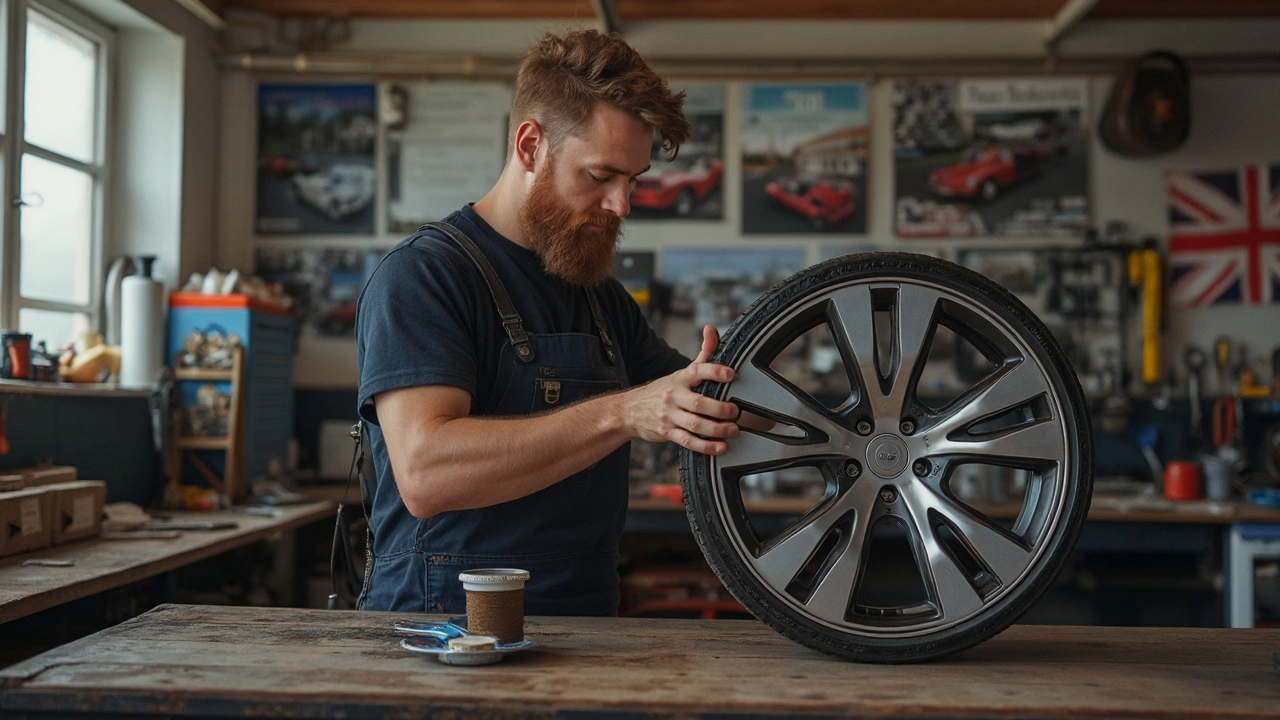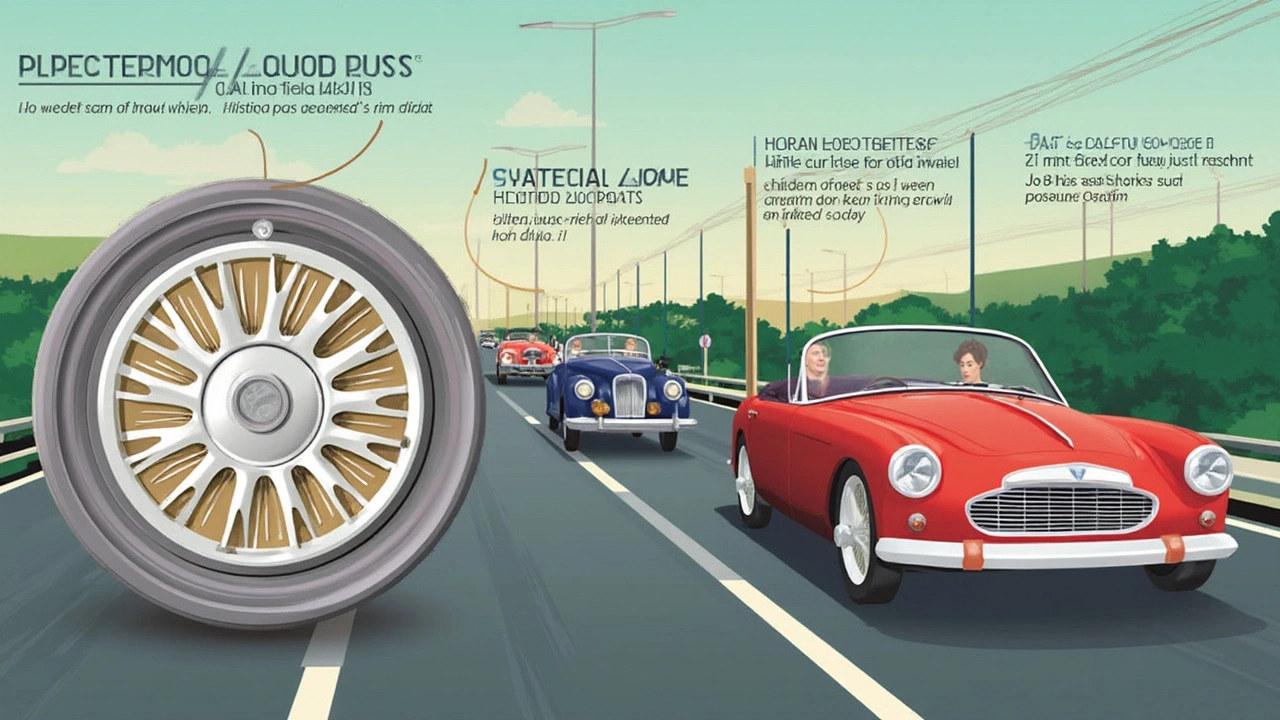You know what never fails to catch my eye when I’m picking Rhea up from school in Adelaide? Cars parked on the curb, some showing off gleaming wheels that could outshine street signs, others… not so much. But in the playground chatter of parents and tradies, there’s always confusion about “alloy wheels” and “rim wheels.” Are they actually the same? Does it matter for the wallet or the drive? Turns out, the differences aren’t just about looks—they actually affect safety, performance, price, and even your Saturday arvo cleaning routine.
Understanding Alloy Wheels and Rim Wheels: What’s in a Name?
First, let’s clear up something: all wheels have rims, but not all wheels are alloys. Sound confusing? You’re not alone. In car talk, the word "rim" is sometimes tossed around when people really mean the entire wheel, but technically, the rim is just the outer edge holding the tire in place. The full wheel includes the center (the disc or face), the rim, and all the bits attaching it to your car.
Now, alloy wheels are called that because they’re made from an alloy—usually a mix of aluminium and a dash of other metals, sometimes magnesium. Wheels made just from steel (plain old steel ones) get called steel wheels. So, when folks say “rim wheels” and mean steel wheels, they’re a bit off, but hey, we've all done it. In Australia, lots of casual car chats use the terms interchangeably, but when you’re buying or maintaining a car, the details matter.
Why does the material matter? Well, alloys are lighter. This isn’t just trivia for car nerds—it means your engine doesn’t have to work as hard to push the wheels, making your car accelerate better and handle corners slicker. Steel wheels are heavier and a bit more old-school, but they’re tougher and less likely to get bent if you hit the odd pothole or Melbourne tram track (don’t ask how I know...).
Car makers started putting aluminium alloy wheels on production vehicles in the 1970s. The main appeal? Cutting down weight. Here’s a quick look at how the numbers compare for a mid-size sedan:
| Wheel Material | Average Weight (kg) | Common Use |
|---|---|---|
| Alloy | 7-10 | Performance, daily drives, family sedans |
| Steel | 11-16 | Budget new cars, utility vehicles, spares |
The lighter weight also means less wear and tear on your suspension and brakes.
What about cost? If you’re replacing a wheel after a fun run-in with a curb, steel wheels come in much cheaper. Alloys might set you back two to three times as much, but there’s a reason: they just look better, can be made in more interesting shapes and finishes, and can actually increase your car’s resale value.
Here’s a strange fact: if you’ve ever seen a car’s steel wheels start to rust almost before your coffee gets cold, it's because steel is prone to corrosion when you scrape the paint or coating off. Alloys don’t rust; they can get oxidised (those chalky white patches), but it doesn’t eat holes the same way.
So, are “rim wheels” really just another word for steel wheels, or just the rim itself? When in doubt, ask the dealer or your local mechanic to be specific. You don’t want to end up with the wrong set for your Subaru because of a word mix-up.

Performance, Safety, and Maintenance: Living With Your Wheels
If you’re like me, you want to know how things hold up in real life—especially when you’re packing kids, groceries, and soccer balls in and out of the boot every week. Alloy wheels shine when it comes to performance. The lighter they are, the less “unsprung mass” is on each corner of your car. Yes, that’s actually a term—basically, it’s the weight not directly supported by your suspension, and having less of it makes driving feel tighter and more responsive.
Ever noticed those sporty cars in the Clipsal 500 tearing around corners? Nearly all of them use alloy wheels—not just for looks, but because better handling is a game-changer. That said, alloys are more likely to crack on big hits than steel wheels, which just bend and can be hammered back (with the right tools and lots of swearing).
When it comes to safety, the story is a little nuanced. If you do most of your driving on smooth city roads, alloys offer plenty of safety, and you get extra perks like better brake cooling. Alloys often come with wider designs that let air flow over your brakes and help stop “brake fade”—that sinking, queasy pedal feeling you get after a long downhill. For rural drivers facing gravel, potholes, and unpredictable surfaces, steel wheels make more sense because they’re less likely to turn a nasty pothole hit into a permanent repair bill.
Worried about cleaning and maintenance? I’ve spilled my share of car wash buckets and sponged up too many lunchtime crumbs to know that alloys are pickier about care. Brake dust shows up fast, and you’ll want to use proper alloy wheel cleaner—anything with harsh acid can eat into the shiny coating. Don’t use whatever’s left in the kitchen sink, trust me. Steel wheels are fine with regular car wash soap and need more attention to rust.
Here are some handy tips if you want your wheels to keep looking sharp and last longer:
- Rotate your wheels every 8,000-10,000 km to even out the wear, especially if you run alloys in front and steel in back.
- Never use steel wool on alloy wheels; it’ll scratch off the protective finish before you can say oops.
- Check your wheel nuts for tightness after any tyre change, but don’t overdo it—you don’t want to warp expensive alloys.
- If you live by the coast, give wheels an extra rinse every few weeks. Salt air and alloy don’t get along.
- If a wheel looks bent or cracked, get it checked straight away. A dodgy wheel can ruin a family trip faster than spilled juice on the seats.
Let’s put it this way: if you want your car to feel special, go for alloys; if you’re after “set and forget” durability, steel wheels (sometimes called “rims” in chat) are low-frills but reliable.

Choosing What’s Right for Your Car—and Your Lifestyle
The heart of the choice: what suits you, your car, and how you drive? Me, I’ve spent enough weekends loading Rhea’s bikes and seeing how wheels handle every speed bump and gravel back road to know there’s no “one-size-fits-all.”
If you drive mostly in the city, have a late-model sedan or hatch, and want a bit of street cred, alloys offer unbeatable style and handling. They can boost your car’s value at resale, and you’ll get lots of compliments at Bunnings, if that’s your thing. They also come in every style imaginable—from shiny black to bronze, you can make your car pop in a crowd. Remember though, curb scrapes hurt your pride and your wallet more with alloys.
Got a 4WD or do you tour the Outback? Or maybe your weekends are spent at footy matches out past McLaren Vale, with the odd muddy patch? Rugged steel wheels are hard to beat. Replaceable, cheap, and easy to bash back with a mallet if you really do a number on them (and you can hide the war wounds with hubcaps).
Here’s a quick decision chart for quick reference:
| Driver Profile | Best Wheel Choice | Key Reason |
|---|---|---|
| Daily City Commuter | Alloy | Looks, handling, less unsprung mass |
| Off-Road Enthusiast | Steel | Durability, repairability, price |
| Budget Shopper | Steel | Lower up-front cost, easy swaps |
| Style Seeker / Custom Mods | Alloy | Finishes, designs, higher resale |
Don’t forget: whatever wheels you choose, tyre quality matters just as much. A flash set of alloys means nothing if you skimp on tyres that won’t grip in the wet driving along The Parade after a summer storm.
Insurance can also come into play. If your vehicle’s fitted with fancy alloys, declare it to your insurance company—otherwise, if they go missing or get damaged, you might end up only covered for basic “rims.” Some insurers in Australia let you list aftermarket wheels for an extra premium. If you’ve splashed out on something special, keep receipts and photos.
Eco-conscious? You’ll be glad to know aluminium alloys are recyclable, and some brands (like Enkei or BBS) even use recycled alloy in their new wheels. Steel wheels are recycled in Australia’s scrap yards all the time but tend to be less flashy in their green credentials.
If you’re itching to upgrade, try this: bring your current car to a tyre shop, ask them to weigh your wheel and compare it to their lightest alloy demo. You’ll be surprised how much it changes the way your car feels. Even Rhea noticed the difference when I swapped in lighter wheels—she said the car “feels more jumpy and happy.” Sometimes the best test is just loading up the family and seeing how it all feels.
Whether you’re chasing looks, toughness, or that sweet steering feel, knowing exactly what separates alloy wheels from steel “rim” wheels means fewer regrets and a better drive every single time. So next time you’re dodging trolley dings at the shopping centre, you’ll know exactly what your car’s rolling on—and why it matters.